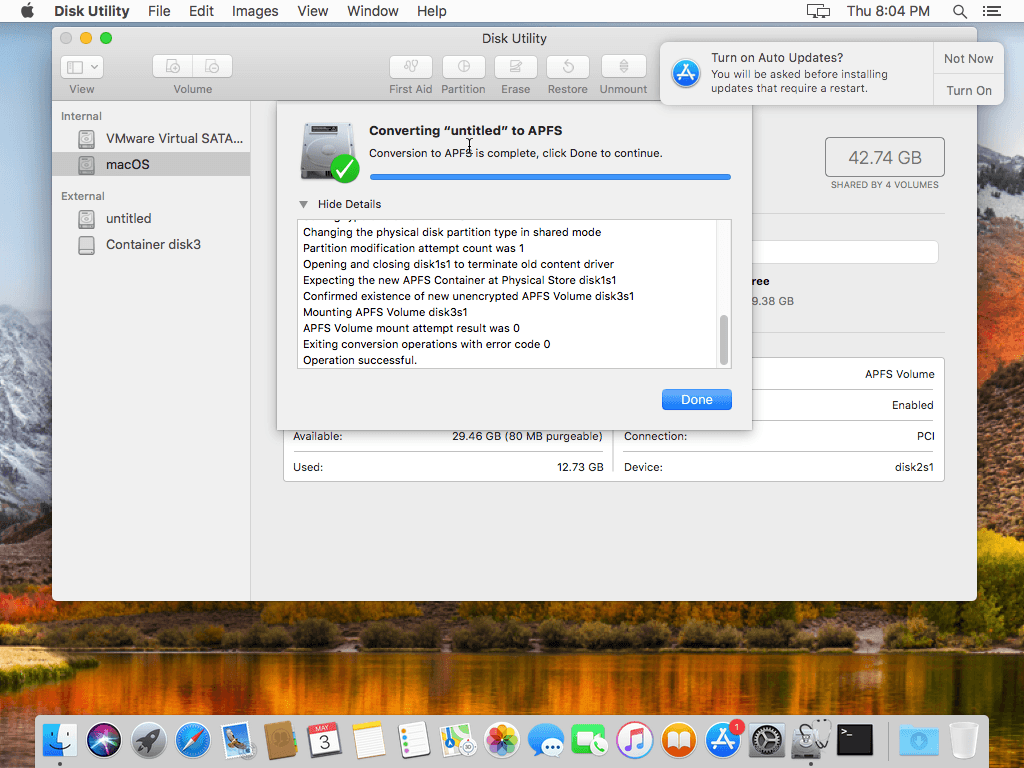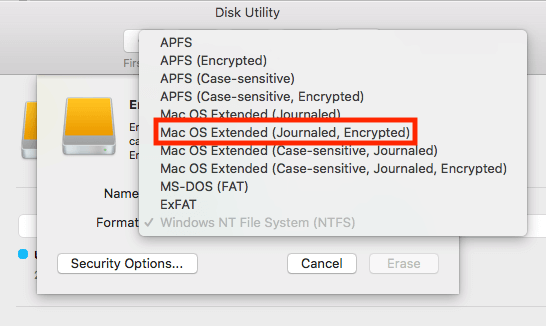
- NO MAC OS EXTENDED JOURNALED ENCRYPTED HOW TO
- NO MAC OS EXTENDED JOURNALED ENCRYPTED FOR MAC
- NO MAC OS EXTENDED JOURNALED ENCRYPTED MAC OS X
- NO MAC OS EXTENDED JOURNALED ENCRYPTED PC
- NO MAC OS EXTENDED JOURNALED ENCRYPTED PLUS
But which format to choose is the big question now! No need to worry. You will need to choose a format option to change your flash drive's file system. Read the description of each format given below and choose the format of your choice.

Just below the Name section, you can see a section called 'Format'. This name will be visible on other devices as well if you plug your flash drive into them. Here you can change the name of your USB drive if you wish. This will erase your whole drive and make it a single partition. Step 3: Now Click the 'Erase' button which is located just below the title bar of the window which says 'Disk Utility'. Step 2: Search for your flash drive on the sidebar of the Disk Utility app and select it by clicking on its name. Navigate to Utilities and then Disk Utilities. Alternatively, Open the Finder window and select applications on the left sidebar. Type Disk Utility in the search box and press enter.

Step 1: Press Space while holding your command button.
NO MAC OS EXTENDED JOURNALED ENCRYPTED HOW TO
How to format a flash drive on Mac?ĭisk Utility application in MacOS is the best option to format a flash drive on MacOS. But if it is NTFS, format your flash drive to make it completely compatible with MacOS. If your flash drive's file system is MS-DOS or ExFAT you can use it as it is without further formatting. Here you can check the current format of your flash drive. Your drive will be on the left column of the window. Open the Disk Utility app from the utility folder available in the application. Just to the right of 'Format' is your drive's file system. Select 'Get Info' from the list of options opened.Ī new window will open. Now open the Finder and look for your USB device. You don't need to do anything special to know your flash drive's file system. Before you format a flash drive it is suggested to know what file system your flash drive is in.
NO MAC OS EXTENDED JOURNALED ENCRYPTED PLUS
HFS filesystem is modified into HFS plus (Modernly called as MacOS Extended). HFS stands for Hierarchical File System.Īpple introduced this file system in 1985 to replace the existing Macintosh File System or MFS. Here, pop-ups the question: How to format a flash drive on a mac? If you want to use your flash drive solely for MacOS, it is highly recommended to format your flash drive. Extra work is needed to use NTFS on MacOS. The latter one, NTFS is mostly used on the Windows operating system and not an optimal option for MacOS. Fat32 can store files only up to 4 GB of size.
NO MAC OS EXTENDED JOURNALED ENCRYPTED FOR MAC
If you want to make your drive compatible with Mac and Windows, you need to format it with a common file system for Mac and Windows.Īlthough the first one, Fat32 is completely compatible with both MacOS as well as Windows, it has some limitations. NTFS is the default file system for Windows operating system and HFS for Mac operating system. Two file systems compatible with Mac and Windows. MS-DOS (FAT) is also compatible with Mac and PC, but you can only transfer files smaller than 4GB.
NO MAC OS EXTENDED JOURNALED ENCRYPTED PC
ExFAT is compatible with both PC and Mac. APFS (Apple File System) is only for newer Macs running macOS 10.13 or later. Mac OS Extended (Journaled) is the best option for most Mac users since it is compatible with all Macs. Step 1: Locate your USB stick under This PC, right-click on it and select the Format option. For example, in Windows XP 'My Computer' is equivalent to 'This PC' on Windows 10. The screenshots may look slightly different. If you are on an earlier operating system like Windows 7, XP, etc. Mac OS Extended (Journaled) file system is how it's referred to on your Mac. HFS+ and Mac OS Extended (Journaled) file system are one and the same thing. This means your new My Passport is formatted to HFS+ (Hierarchical File System). The other type of WD My Passport hard drive comes in a ‘for Mac' version.
NO MAC OS EXTENDED JOURNALED ENCRYPTED MAC OS X
That's the reason why most of the flash drives in the market are available in Fat32 or NTFS formats which are the most preferred format for windows.įile types There are currently 87 file extension (s) associated to the Mac OS X application in our database. In contrast, only 27.4% of users use MacOS, obviously for their apple computer.

Majority of 49.4% of desktop and laptop computer users in the world use Windows operating system. Not only this, we will help you pick the best file system for your usb flash drive that you are planning to use on a Mac. This simple guide will teach you How to Format a Flash Drive on Mac.


 0 kommentar(er)
0 kommentar(er)
